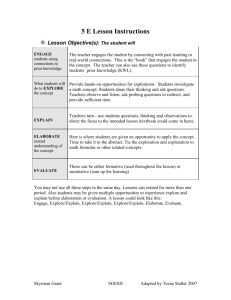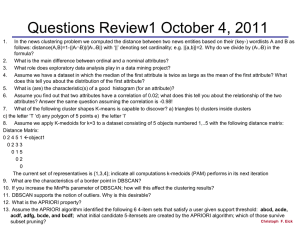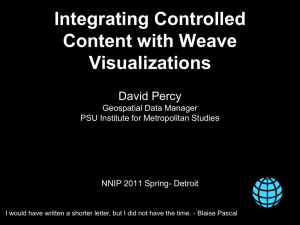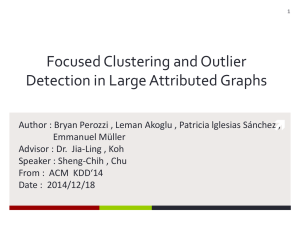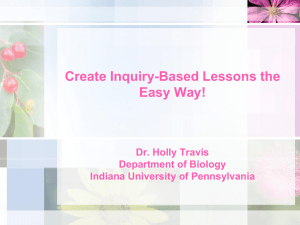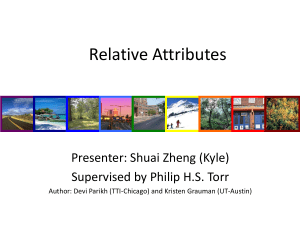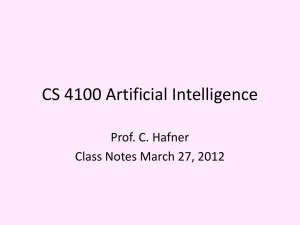Brief 5-E Presentation
advertisement
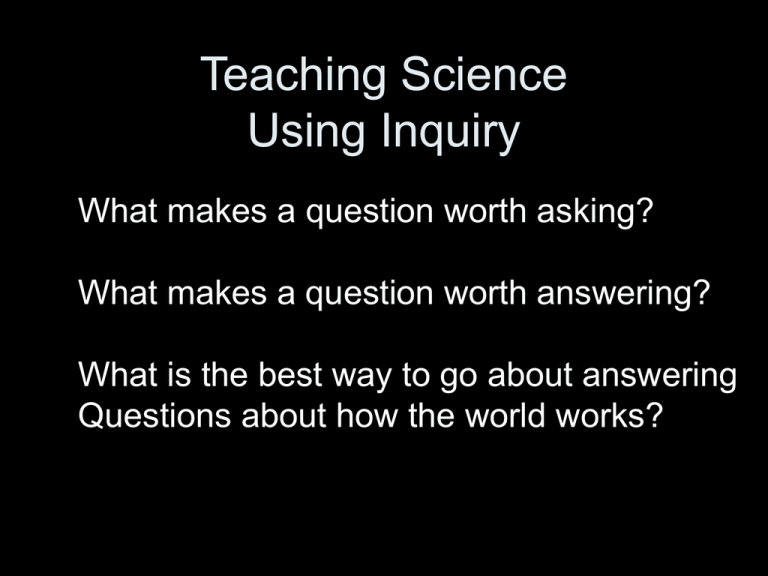
Teaching Science Using Inquiry What makes a question worth asking? What makes a question worth answering? What is the best way to go about answering Questions about how the world works? Learning Cycle Exploration Application Introduction Learning Cycle Engagement Exploration Application Evaluation Introduction Engagement Exploration Application Elaboration Evaluation Explanation Introduction Engagement Exploration 5-E Learning Cycle Explanation Elaboration Bybee & Trowbridge BSCS Evaluation 5-E Learning Cycle • • • • • Engage Explore 1. General Syntax: Explain “I was just thinking about… Elaborate And that leads to the question; …?” 2. Builds Relevance Evaluate Personal connection (This is about you/your world.) Vividness (Cool! Let’s take a closer look at that!) Intrigue (Well, that gives us a puzzle to solve!) Novelty (We haven’t seen that before, let’s explore it) 5-E Learning Cycle • • • • • Engage Elicitation—of student ideas Explore occurs either at the end of Engage or the beginning of Explore. Explain Elaborate 1. Uses “Science Processes” a.k.a. “Process Skills” 2. Models the “Nature of Science” Evaluate 3. Allows learner some control over ideas generated 4. May be structured to guide toward specific concepts Engage & Explore Concepts Students use science processes to gather evidence about… • Attributes • Name • Examples Concept Name: Convective Heat Transfer Attribute 1: Movement of a fluid Attribute 2: Less dense fluid rises Attribute 3: Due to heat differences Example: Ocean currents Explain State Concept Name: Convective Heat Transfer Outline Attributes: Attribute 1: Movement of a fluid Attribute 2: Less dense fluid rises Attribute 3: From molecular motion due to heat Build Definition: The movement of heat due to differences that heat causes in the density of portions of a fluid Elaborate Offer Clarifications Attribute 2: “Less dense fluid” is essentially same substance Additional Examples: Hot and cold water added to tank Magma, Hot air over different surfaces Provide Non-examples: bubbles, hot air balloon, any solid air pushed over mtns. (orographic flow) Evaluate Draw the major ocean current gyres onto your map. Make a concept map about ocean currents & heat Edit the explanation you wrote for your “Observation” Ideally, Inquiry-based Teaching Will… 1. Focus on relevant question(s) 2. Move from evidence to conclusions (Inductive) 3. Use science processes (Science process skills) 4. Generate additional science questions 5. Make use of pedagogical content knowledge
